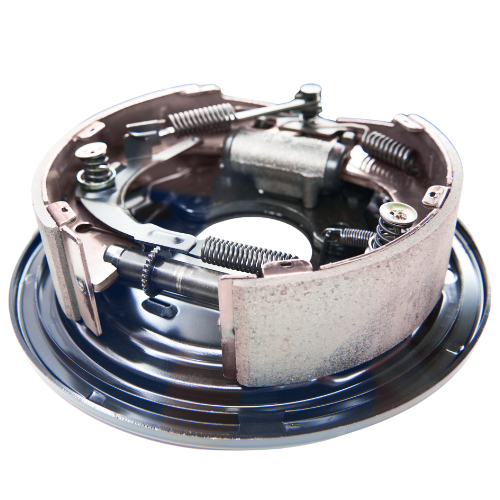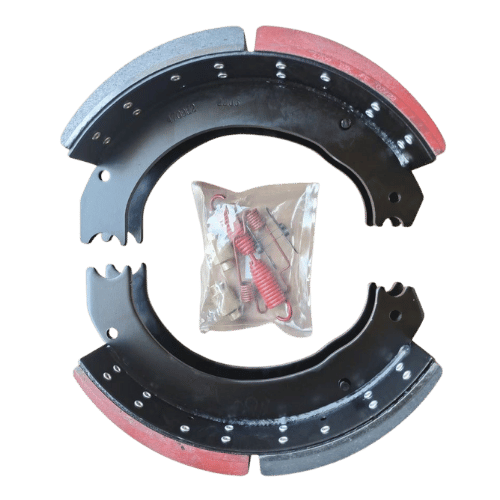Explore the four key components that make up a truck’s brake system—engineered to ensure safe, reliable, and powerful stopping performance on every road.

Every kilometre counts in heavy-duty transport. Whether moving freight across highways or navigating construction sites, trucks rely on their braking systems to manage immense loads under extreme conditions. Brake components such as heavy duty brake calipers, brake chambers, slack adjusters, and brake shoes are not just mechanical parts. They are the foundation of vehicle safety and performance.
For truck brake calipers manufacturers, innovation lies in improving materials, manufacturing precision, and quality control to meet the demands of modern fleets. Each component must perform consistently, resist heat, and maintain braking efficiency over long operational cycles.
Today’s heavy-duty braking systems are built to handle more weight, more mileage, and more challenging environments than ever before. The key to their success is a combination of engineering refinement, material innovation, and disciplined production processes that ensure every component performs under pressure.
Fleet operators expect trucks to deliver more while operating longer between maintenance cycles. At the same time, transport regulations and safety standards continue to tighten, placing more pressure on manufacturers to ensure reliability and precision.
The main operational challenges include:
To meet these challenges, manufacturers such as GAPASA integrate modern production technologies and rigorous testing standards that reinforce product reliability and performance.
Brake calipers are the heart of the braking system, converting hydraulic or pneumatic pressure into mechanical force that clamps the brake pads against the rotor. In heavy-duty trucks, brake calipers face continuous stress from both load and heat.
Key innovations shaping today’s caliper production include:
Through these developments, truck brake calipers manufacturers achieve the balance between power and precision that heavy-duty applications demand.
The brake chamber plays a crucial role in air brake systems by converting air pressure into mechanical force to engage the brakes. In modern trucks, these chambers must deliver reliable performance across millions of actuations.
Modern advancements in brake chamber design include:
The combination of these design features results in a brake chamber that provides dependable operation under high pressure, maintaining stability and control for fully loaded vehicles.

The brake shoe may appear simple, but it is one of the most critical components influencing stopping distance and heat management.
Modern brake shoe manufacturing emphasises:
These refinements ensure that brake shoes perform consistently across extended duty cycles, reducing wear and improving safety for large fleets.
A slack adjuster ensures correct brake clearance in air brake systems, compensating for lining wear and keeping the braking response uniform. The reliability of this small but essential component determines whether a truck can stop smoothly or risk uneven braking.
Current design features in modern slack adjusters include:
These improvements make slack adjusters more reliable and maintenance-free, supporting consistent brake performance over extended service intervals.
The foundation of modern braking reliability lies in materials. Each component, from the heavy duty brake calipers to the brake chamber, benefits from specialised material treatments designed to handle both thermal and mechanical stress.
Common material advancements include:
By combining stronger materials with improved processing techniques, manufacturers ensure that components retain their performance characteristics even under sustained stress.
Reliability is not achieved through design alone. It depends on strict quality control and validation processes. Leading manufacturers like GAPASA employ comprehensive testing standards that replicate real-world conditions.
Typical testing and inspection procedures include:
These testing methods confirm that each component, from the brake calipers to the slack adjuster, performs as intended throughout its service life.
GAPASA is a trusted manufacturer and supplier of premium-grade braking components for the commercial vehicle industry. With years of experience serving global transport and logistics sectors, the company delivers products engineered for strength, safety, and precision.
Its extensive product range includes heavy duty brake calipers, brake chambers, slack adjusters, and brake shoes, all manufactured under rigorous quality control systems. GAPASA integrates advanced machining, casting, and testing technologies to ensure each component meets international performance standards.
By combining innovation with reliability, GAPASA continues to support fleet operators, distributors, and OEMs in achieving safe and efficient braking performance across diverse road conditions.
The demands of heavy-duty transport continue to rise, pushing braking systems to perform beyond traditional limits. Each component, from brake calipers to slack adjusters, plays a critical role in delivering safety and control for vehicles carrying heavy loads.
Modern manufacturing has transformed how these parts are built, using stronger materials, advanced machining, and rigorous testing to guarantee durability and precision. Companies like GAPASA demonstrate that innovation does not always mean reinventing technology. It means improving existing systems to meet the ever-growing challenges of the road.
In the world of heavy-duty transport, braking systems must not only stop a truck, they must keep the entire operation moving efficiently, safely, and profitably.